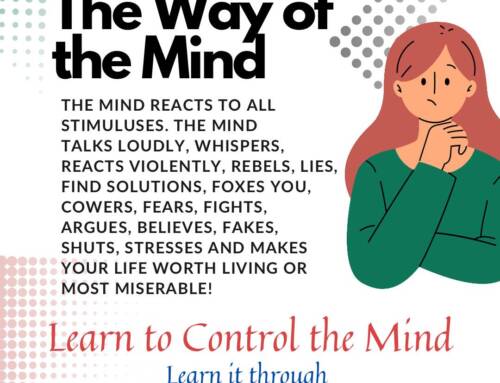 Do clothes make a man? Walking through a shopping plaza or a mall, you come across glitzy shops selling clothes of various styles, shapes and sizes.
Do clothes make a man? Walking through a shopping plaza or a mall, you come across glitzy shops selling clothes of various styles, shapes and sizes.
During the sale, you find people jostling and fighting over a single piece of clothing too. The craze of the word “sale” is maddening. You can see the unlikeliest of a person out shopping.
How does the person buy? When the supposed discount is higher, they buy in larger quantities. Sometimes you see discounts much higher than the perceived cost of the item. Let us say a pair of shoes are on 60% discount or more then you would buy that, won’t you?
Let us see now for a dress which is available for a MRP of $250 is now at 50% off, which translates into $125 and for you that is a great price. Next the store comes out with killer pricing of 70% discount and you are floored. You wonder how these people can afford to discount so much. Then the item comes to you at a still lesser price of $75 and you exult and think it is a steal. Even a discount of 80% will make you feel bad for the poor soul who is selling it to you. How can the store sell it for $50? You are now really sad at the plight of the brand. You think they have gone to the pits. Now let me tell you the secret. These great brands have got it FOB @ $10 which means free on board. Now add a margin of 2400% which is a bomb. There you have the MRP. So even if they give you a discount of 90% these people have made a killing. Since 90% discounts amounts to selling you the dress at $25. Which is still $15 profit. Which translates into a margin of 150%. And you are feeling sorry for them now? You will call them the cheats!
But wait and see how they fare. These great brands are paying a rental of far over your heads so we cannot blame them also. Then there are other things that they have to bother about. The salaries, store maintenance, lighting and water, cleaning and other services, window dressing, frontage, parking, security, point of sale expenses, goods return, taxes, local levies, transportation, etc..
Now you have to know that they too have to make some profits. Just as you take home salaries, they are supposed to but they don’t do that mostly. If you think I am saying something wrong, look at the stores that have opened their chains. There are only a few in number with deep pockets.
So if you see you have a lot to learn about their trade. So instead of that we can try understanding from your perspective what is the right thing for you to do.
Let’s begin with what is it that you want or need. We have never begun there. So let us see what we have in our cupboards or wardrobes. Make a list of things that you use and then what is missing from it. When you actually do the audit of your wardrobe, you will come across stuff that you have never imagined having owned.
Some which is still lying with price tags, some with holes or torn, worn out pieces and what nots. Some stuff is not wearable since you have outgrown. What are you hoarding them for? Someday you will become thin or your old self? Bah! Imagine that and think that you are going to put on that stuff then! Never. You will go out and buy more. That’s how we all think.
So now that you have assessed. Check out only those things you need desperately. Make a list of those things and then set out to buy them. But first do your ground research. Where are the sales going on? When? How to monetize the coupons you have and accumulate your points on the card company or convert points to coupons. Avoid using credit cards. Unless the card company has some discounts to offer.
Whenever you are buying anything assess it’s worth to you. Are you going to use it more often or is it one time use? Let us say, you are buying a tailcoat tuxedo or an evening wear, wedding dress or dress for someone’s wedding or ceremonies, ceremonial wear for funerals, etc., graduation wear, shoes for the ball or annual dance or fete, etc., office wear or casual, outerwear or inner wear, lingerie or undergarments, headwear or shoes? Any of these things have a certain value. Imagine the shoes that you are buying can be worn only once in the year then if you are buying them for $100, then their utility is worth 100 per annum. Or should we call it return on investment? But imagine you buy another pair which you can double it for office shoes, then the same figure if you use it ten times to office per month and for special occasion about twice which translates into 12 times a month and 144 times a year. The ROI will be very good then, right?
So assess your wardrobe and check out the usability and utility of the object. Then consider how you are going to leverage it. Think of the items value. If you are buying for a specific interview and if you are landing a well paying job, then it is very good value.
So before we think about the stores profitability, let us see the value worth of that item to us. Why buy something which is going to be a drain on the resources?
Today, when a woman buys a traditional silk sari for ten or twenty grand, I ask her how many times in life is she going to wear it again? Is she going to wear twice or thrice? Then how does she feel blowing ten grand on herself for two hours for some useless ceremony? Then what right does she have telling her maid, who spent five grand on buying an android phone? Anyway the maid uses the phone two to three hours a day! Even though she couldn’t afford it, yet she makes the best possible use of it.
Being an astute consumer is extremely important. Don’t spend money just because you have it. If you booze over a thousand dollars worth per month, can you not spend ten percent of it on some good purpose? So in the same way, can you not save money by not buying useless stuff which has little utility value? So use the resources to the utmost. Don’t waste money. Be good to yourself.
Image Courtesy by pixabay







